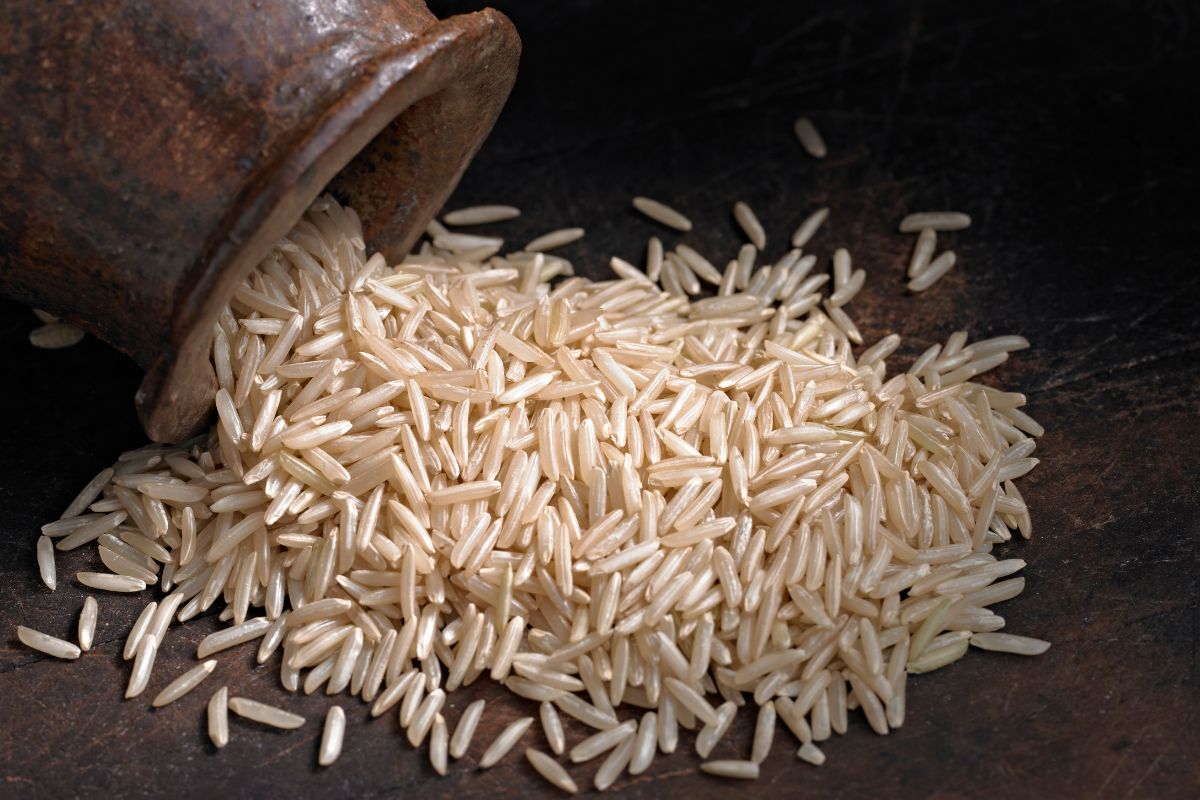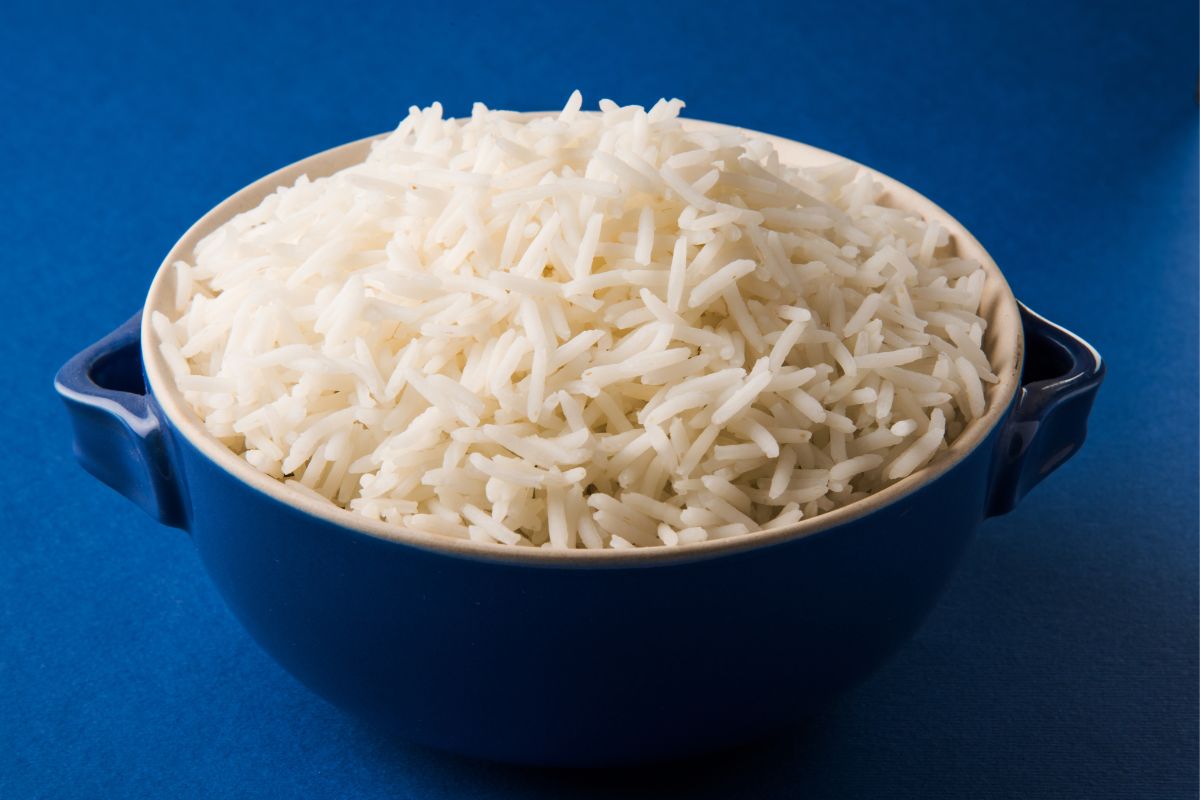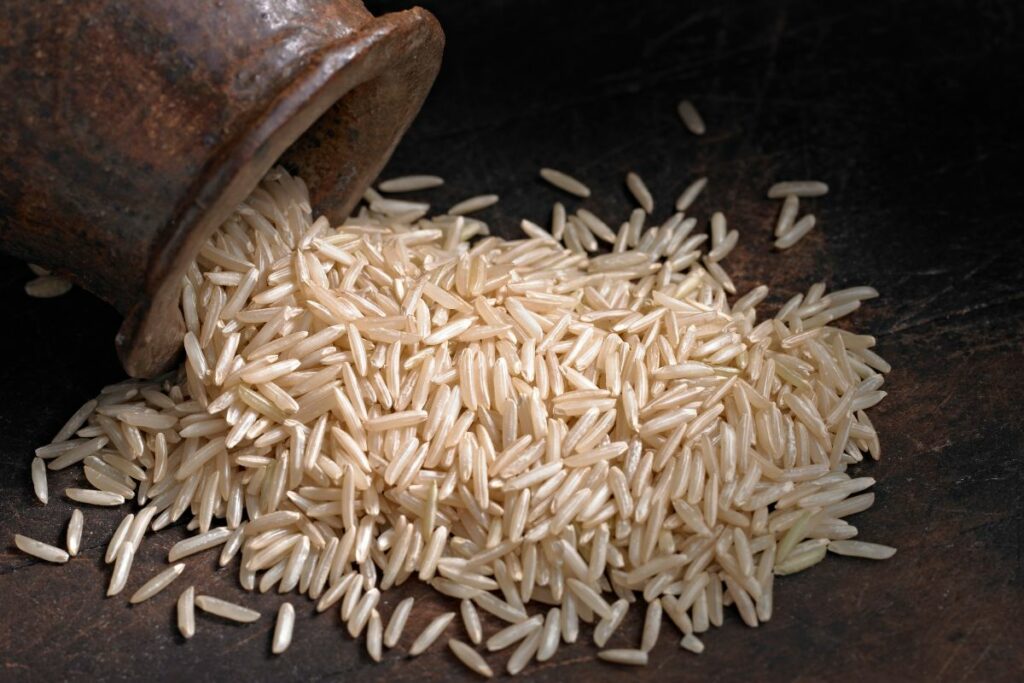In recent years, rice has become one of the most popular foods around the world, and it’s not hard to see why.
Rice is so versatile that you can use it with almost every meal, from rice porridge for breakfast to rice pilaf for dinner.

There is a surprisingly large number of different types of rice, including short and long grain rice, brown rice, jasmine rice, white rice etc.
We take a closer look at basmati rice. Does this type of rice belong to the healthy category of long grain rice? And how do you cook Basmati rice in the best way?
Read on to find out!
Is Basmati Long Grain Rice?
Yes, basmati rice is a kind of long grain rice which originally comes from the regions around the Himalayas.
In fact, basmati rice has the longest grains of any type of rice. Unfortunately, this means that you will also need to cook it for much longer.
But let’s find out what basmati really is.
What Is Basmati?
Basmati is a type of long-grained rice. Its grains are long and slim which makes it an excellent rice for cooking and adding flavors to your meals.
Basmati rice is only grown in Pakistan and Northern India, and no other rice from other regions are permitted to be labelled as basmati rice.
You can find basmati rice also as wholegrain. This wholegrain rice is a little lighter which makes it much quicker to cook than some other types of rice, such as brown rice.
Basmati rice is often cooked together with a range of roasted or braised meats as well as curries.
You can also serve it plain with some saffron or turmeric which brings out its flavor and adds a bright yellow color to the rice.
What Does Basmati Rice Taste Like?
Basmati rice is a slightly floral and nutty aroma, which is very similar to jasmine rice which is also a long grain rice. This distinctive flavor makes basmati ideal for cooking Asian cuisine.
However, cooked basmati is a little softer than some other types of rice, so it is easier to digest.
What’s The Difference Between White And Brown Basmati Rice?
The main difference between brown and white basmati rice is that the brown basmati is wholegrain rice, and the white is the original basmati rice.
The difference in color is achieved through the different processing of the rice grains.
With white basmati, millers remove the outer cover of each rice grain and the rice seed which typically helps the plant to grow.
This only leaves the white, starchy part of the grain.
In comparison, whole grain basmati rice contains all parts of the rice grain, including husk and seed.
Cooking Basmati Rice

High-quality basmati rice should never be sticky but light and fluffy. That’s why, chefs do not recommend cooking or simmering basmati rice like other types of rice.
The best way to perverse this fluffiness in basmati, as well as its nutrients, is preparing this rice with the pilaf method.
You will need to sauté the basmati rice grains in oil first. Then add some minced onions and other spices that you want to use to increase the flavor.
Then add some vegetable stock or broth. Now you need to transfer the entire put (covered with a lid) into the oven. Allow the rice to cook until all the liquid is absorbed.
The sautéing of the rice allows each grain to soak up the oil, and this will prevent any stickiness (see also our article on soaking grains).
In addition, the hot oil will also add flavor and aroma to your rice, and it will also add a little more nuttiness.
Equally, the heat in the oven makes sure that the heat inside the pot is distributed evenly. This is much more gentle on the rice than stovetop cooking where all the heat comes from the bottom.
Traditional Indian, Pakistani and Asian cuisine also adds a range of spices to flavor basmati rice while cooking it this way.
They add cinnamon sticks, whole cardamom pods, allspice or star anise. Also turmeric and saffron are a popular spice to give the rice a different color.
Should You Soak Basmati Before Cooking?
Some basmati recipes may ask you to soak basmati rice before you cook it. However, good-quality basmati rice should never be soaked.
The rice has gone through a long process of drying to preserve its nutrients, and soaking basmati rice overnight will undo all this.
Soaking basmati will also make the grains more sticky, which means soaked basmati rice will not be as light and fluffy as it should be.
What’s The Difference Between Long Grain And Short Grain Rice?
Basmati, as one of the longest rice grains, is much bigger than short grain rice. But what are the differences between these two types of rice?
Size
This is one of the biggest and most obvious differences between short and long grain rice. Long-grained rice grains are long, pointy and narrow. Typically, they measure between three to five times in length than in width.
In comparison, short grain rice is much shorter with usually just 5.5mm.
Fluffiness And Stickiness
As a rule of thumb, long grain rice grains are commonly much more fluffy and less sticky. However, this does depend on the cooking method.
As short-grain rice is more starchy than long grains, it is also much more sticky and less fluffy.
Cooking Time
Another difference between these two types of rice is their cooking time. As long grain rice, such as jasmine and basmati rice, are so much bigger, they also take longer to cook.
Comparatively, shorter grain rice, such as sushi rice and arborio rice, is relatively quick to cook and prepare. It typically only takes 15 minutes to cook in boiling water.
Final Thoughts
Basmati rice is an ideal rice for many Asian meals, such as curries or pilaf dishes. As a long-grain rice, it is light and fluffy making it a real pleasure to enjoy.








